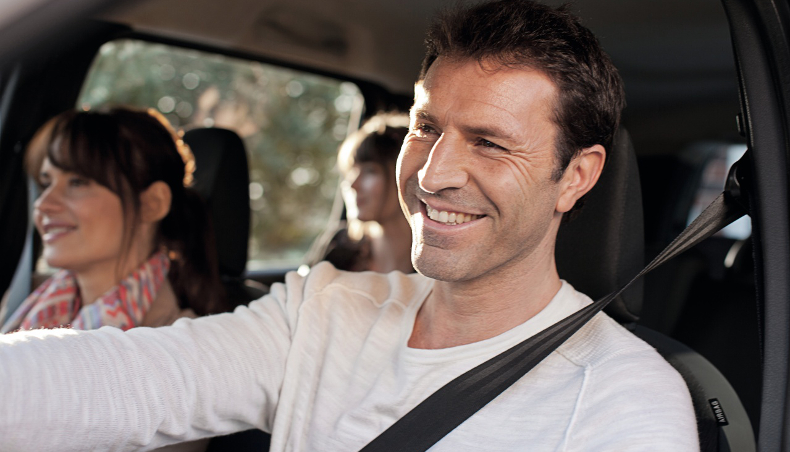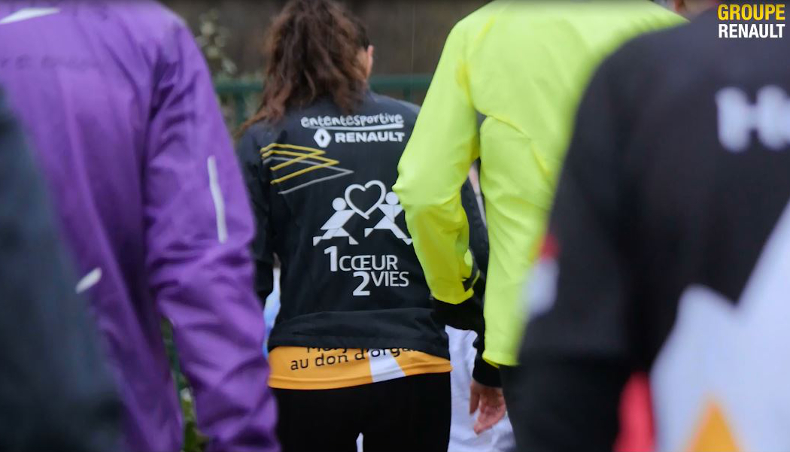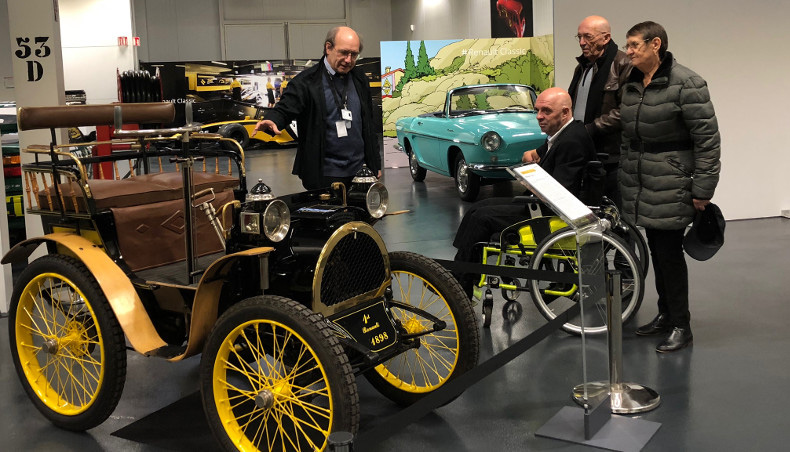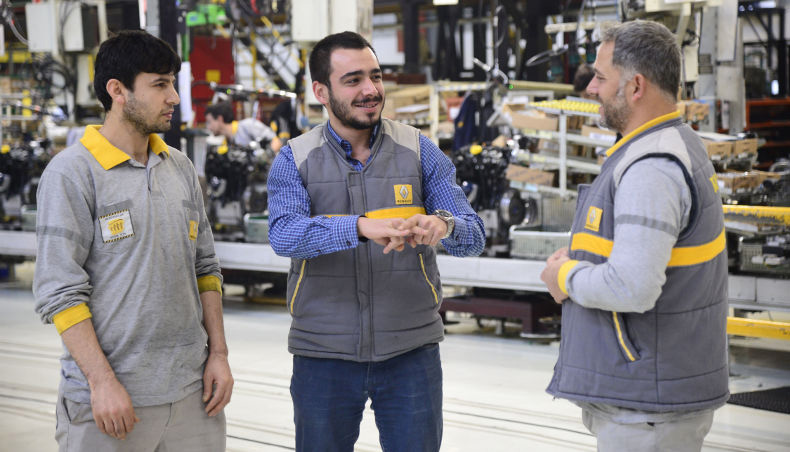

7 steps in buckling up the right way
Whether you’re the driver or a passenger, making a quick trip or a long journey, it is essential to fasten your seat belt. To ensure it performs its role effectively, there are a few simple rules you must follow.
- Remove your overcoat, your jacket, your anorak, or other thick clothing. Otherwise, pass the seat belt underneath it.
- Straighten the backs of the front seats to about 110° on both the driver and passenger sides.
- If possible, adjust the headrest so that its top and the top of your head are at the same level.
- If possible, adjust the height of the seat belt using the mechanism usually located on the pillar between the doors. This will ensure that the strap that crosses your chest diagonally passes across the middle of your shoulder.
- Snap the metal plate of the buckle into the latch.
- Tug sharply on the shoulder strap to tighten the lap strap and take up the slack (the space between the belt and your body), to complement the action of the pretensioner system. The pretensioner will instantly lock the belt in the event of a collision, thus shortening the forward movement of the body and reducing the pressure on the thorax.
- Check a final time that the seat belt is properly positioned on the pelvis so as to avoid “submarining,” that is, slipping underneath the seat belt during a collision. If this happens, the seat belt slides up across the abdomen, which then absorbs the full force of the impact, potentially resulting in internal injuries. To be effective, the seat belt must be perfectly adjusted to the shape of the body. The lap strap should cross where the thighs and pelvis meet and not be positioned too high on the abdomen. This will help avoid serious injuries during a collision, since the abdomen is four to five times less resistant than the pelvic bones.

How to transport children safely
According to the latest survey conducted by the road safety association Prévention Routière and the LAB (Renault and PSA’s joint laboratory for accidentology and research on biomechanical and human behaviour), two out of three children are not properly restrained when traveling in a car. “Forgotten,” ill-adapted, badly installed, incorrectly fastened child restraint systems or other such errors can result in serious injuries during a collision.
- Before placing your child in a restraint system, remove heavy coats, anoraks or other thick clothing, even if it means turning up the heat in the passenger cabin.
- Choose the right kind of restraint system – either a car seat or booster seat – according to your child’s size and shape.
- Wait as long as possible to change restraint systems:
- Continue to use a rear-facing car seat until the age of 15 months and a forward-facing seat with a harness until the child weighs at least 18 kg or is 105 cm tall (depending on the child’s size and shape) before moving to a booster seat with a back.
- Wait until the child weighs at least 22 kg and is more than 1.25 m tall before moving to a booster seat without a back.
- Do not move too soon from a booster seat for older children to a seat belt alone.
- Place the car seat in the front seat – remembering to disconnect the airbag – or the back seat facing the rear of the car: this reduces the risk of serious injury by 80%.
- Make sure your car seat can be securely anchored, preferably by choosing one with an ISOFIX system. This system, which is compliant with internationals standards, features a rigid connection between the car seat or booster seat and the vehicle itself. A simple system that can be used in most vehicles, it reduces the risk of errors by 75%.
- Make sure the seat harness or booster seat is properly adjusted. To avoid submarining, it is essential to take up any slack in the straps. You should not be able to pass your hand between your child’s body and the strap, and the strap should never pass under the arm. Preferably choose a booster seat with a guide strap, which ensures the belt is correctly positioned on the shoulder.
- Do not place your child in the car seat though an open door on the traffic side of the car!
Find out more:
Some statistics on child restraint systems:
- 10% of children are not restrained; more generally, more than two out of three children are not safe because they are not restrained or are poorly restrained. On short trips, going to school in particular, the proportion is no doubt even higher!
- 300 children riding in a vehicle die in road accidents in France each year.
- 48% of car seats are incorrectly installed, and in half these cases, the errors are serious. The most common errors when placing the child in the seat include inadequate tension on the harness, a twisted harness, or shoulders outside the harness.
- 43% of fatal accidents involving children are head-on collisions.
Learn more about Renault’s commitment to road safety
Driving safely: our infographics for peace of mind at the wheel




